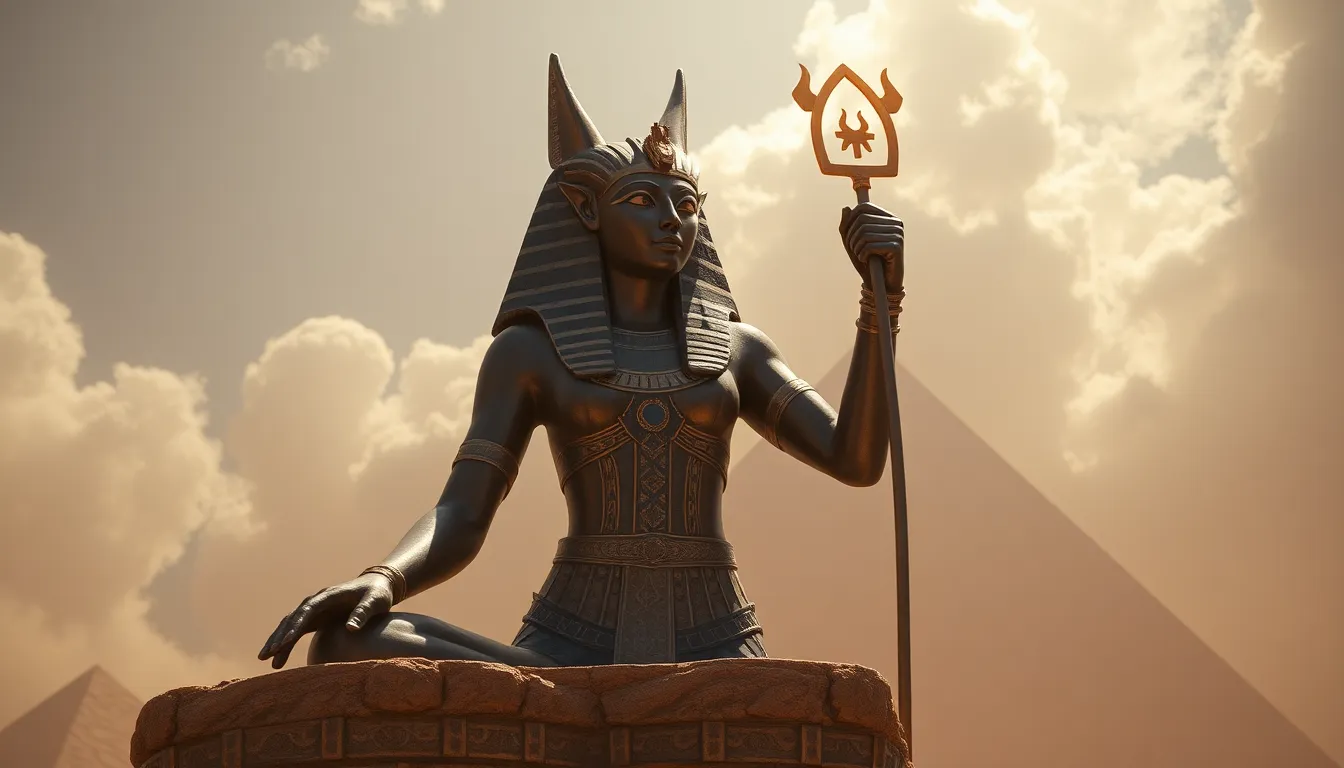The Role of the Goddess Sekhmet in Healing and Protection
I. Introduction
In the rich tapestry of ancient Egyptian mythology, the goddess Sekhmet stands out as a powerful and multifaceted deity. Often depicted as a lioness or a woman with a lioness head, Sekhmet embodies the duality of destruction and healing. She was revered not only as a fierce protector but also as a compassionate healer, reflecting the ancient Egyptians’ deep understanding of the interconnectedness of life, health, and spirituality.
Healing and protection were paramount in ancient Egyptian culture, where the physical and spiritual realms were intricately linked. The Egyptians believed that health was not merely the absence of disease but a harmonious balance between the body, mind, and spirit. This article explores Sekhmet’s vital role in these aspects of life, illustrating her significance in both ancient times and contemporary practices.
II. Historical Context of Sekhmet
Sekhmet’s origins can be traced back to the early dynastic period of Egypt, where she was worshipped as a fierce warrior goddess. Myths surrounding her depict her as a protector of the pharaoh and a fierce defender against chaos and evil.
- Myth of Creation: According to some traditions, Sekhmet was created from the fiery eye of the sun god Ra, sent to punish humanity for their disobedience.
- Dual Nature: Sekhmet’s duality is one of her most intriguing attributes; she is both a warrior who wreaks havoc and a healer who restores balance.
In ancient Egyptian art, Sekhmet is often represented in powerful poses, emphasizing her strength and ferocity. Statues and reliefs frequently depict her in temples, reinforcing her status as a protector and healer.
III. Sekhmet as a Healer
As a goddess of healing, Sekhmet was associated with medicine and the practice of healing rituals. Ancient Egyptians sought her intervention through various means, believing in her ability to cure ailments and protect against diseases.
- Healing Practices: Sekhmet was invoked during healing ceremonies, where priests and healers would chant hymns and perform rituals to call upon her power.
- Symbolism of the Lioness: The lioness symbolizes strength, courage, and protection, attributes that were essential for health and wellness.
Moreover, Sekhmet’s association with the healing arts was so profound that she was sometimes identified with the goddess Hathor, emphasizing the connection between joy and health.
IV. The Protective Aspects of Sekhmet
Beyond her healing capabilities, Sekhmet was also viewed as a fierce guardian against disease and malevolent forces. Her protective nature was invoked through various rituals and offerings.
- Guardian Against Evil: Sekhmet’s role as a protector extended to safeguarding individuals from illness and misfortune.
- Rituals and Offerings: To invoke her protective powers, Egyptians would offer incense, food, and prayers at altars dedicated to her.
Numerous stories recount Sekhmet’s intervention in battles, where she would protect the pharaoh and his people from enemy attacks, showcasing her role as a fierce, protective deity.
V. Sekhmet in Ancient Egyptian Religion
Worship of Sekhmet was widespread throughout ancient Egypt, with numerous temples dedicated to her. The most notable temple was located in Karnak, where she was honored with rituals that emphasized her healing and protective powers.
- Priesthood: The priesthood of Sekhmet played a crucial role in healing practices, performing rituals that sought her blessings and guidance.
- Festivals: Festivals in honor of Sekhmet included processions and celebrations that highlighted her importance in both healing and protection.
These religious practices reinforced the belief in Sekhmet’s power and established her as a central figure in ancient Egyptian spirituality.
VI. Sekhmet’s Influence on Modern Healing Practices
Though ancient Egyptian civilization has long since passed, Sekhmet’s legacy continues to influence contemporary spiritual practices. Many modern healers draw inspiration from her teachings and energy.
- Spiritual Practices: Sekhmet is often invoked in modern rituals aimed at healing, protection, and empowerment.
- Integration of Healing Techniques: Some holistic wellness practices today incorporate ancient Egyptian healing techniques, emphasizing the mind-body-spirit connection.
Additionally, Sekhmet’s imagery and symbolism are frequently used in various healing modalities, reinforcing her enduring presence in contemporary spiritual contexts.
VII. Symbolism and Attributes of Sekhmet
The iconography of Sekhmet is rich and varied, reflecting her complex nature. Her attributes convey significant meanings in the context of healing and protection.
- The Lioness: Representing strength, courage, and ferocity, the lioness embodies the protective aspects of Sekhmet.
- Fire: Associated with the sun, fire symbolizes transformation and purification, essential elements in healing.
- The Sistrum: This musical instrument, often linked to Sekhmet, is believed to create vibrations that promote healing and harmony.
The interplay between destruction and regeneration in Sekhmet’s symbolism underscores the ancient Egyptians’ understanding of the cyclical nature of life.
VIII. Conclusion
In summary, Sekhmet’s significance in healing and protection is a testament to her multifaceted nature as a powerful goddess in ancient Egyptian mythology. Her enduring legacy continues to resonate in today’s spiritual practices, reminding us of the importance of health, balance, and protection.
As we explore and honor the healing traditions connected to Sekhmet, we recognize her role as a bridge between the ancient and modern worlds, inspiring us to seek wellness and harmony within ourselves and our communities.




